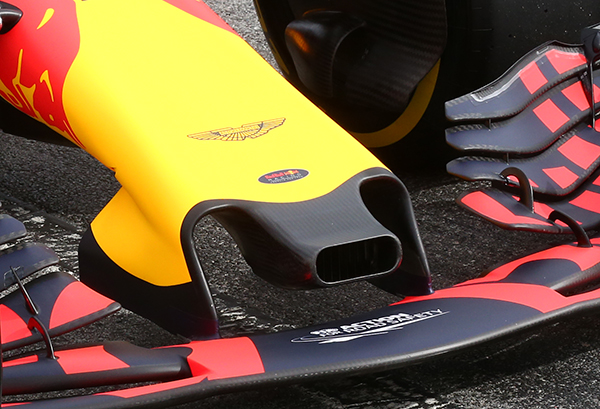
In seven years’ time, you have received two very different targets to reach…
Indeed! From 2011 to 2016, we were required to design tyres with a high level of degradation to increase the number of pitstops and stimulate overtaking. The target for 2017 was different: no degradation, no overheating to allow drivers to push every lap.
The bigger size of the tyre helped us, as it means a bigger footprint: the energy is distributed on a bigger area. But the challenge was the additional downforce and the additional stress put on the tyres.
To cope with this, we developed a complete new philosophy of compounds, with different ingredients, different geometries, different profiles and different manufacturing processes. To have less overheating, we had to enlarge the working ranges of the tyre. They work in a different range of temperature.
It was a big challenge in terms of technology. We had two choices. Staying on the old philosophy of compounds and try to improve what we had, but it was a small step compared to what was expected.
Or taking a “risk” and move on a new approach: that’s what we did, and all five compounds homologated in November belong to this new philosophy [It is worth remembering that tyre compounds are homologated once a year; the product cannot be changed unless there is a unanimous agreement from the teams].
Do you think drivers whose tyre management prowess gave them the opportunity to shine in Pirelli’s low-degradation era will have to adjust their racing style to remain competitive?
No, I don’t think so. In F1, we have the twenty top drivers in the word, which means they are able to adapt their driving style to the package. We saw in Barcelona they were already pushing hard.
While races are likely to feature more open tyre strategies thanks to longer pit stop windows, a drop in the number of pitstops and overtakes can be expected…
We have to remember that the target of the new regulation was to make the car faster and more difficult to drive, with drivers exhausted at the end of the race.
This was the objective. Regarding pitstops, if tyres last longer, there is no need to stop the car and lose time in the pitlane. That makes no sense. We will have fewer pitstops this year that than in the past. It is difficult to say, but I think we will have one stop less, on an average.
We still have some degradation [around a 1.5 seconds drop off in performance over ten laps], otherwise all drivers would just fit the softest compound and run forever. But overtaking will probably be more difficult, because drivers are braking later, and because the following car will lose around 40% downforce.
On the other hand, we might have great passes precisely because they will be more difficult: the driver might not succeed to pass at the first attempt, and then he will try again, as he will be able to recover the grip quicker thanks to the tyres less prone to overheat.
What is the purpose of the 25 days of testing you will have during the season?
Winter tests are organised for the teams. When they have representative runs, we can collect useful data. The 25 days of tyre testing will be dedicated to tyre development only, with one or two teams running, with a rotation among the teams that provide one car and with the same rules that we applied last year (blind tyres, information distributed to the teams, etc.).
They will help us to test a few things for next year, because we will have the possibility to homologate a new range of tyres in November 2017. We can decide to change whatever we want (the range, part of the range, etc.) and to homologate something new.








